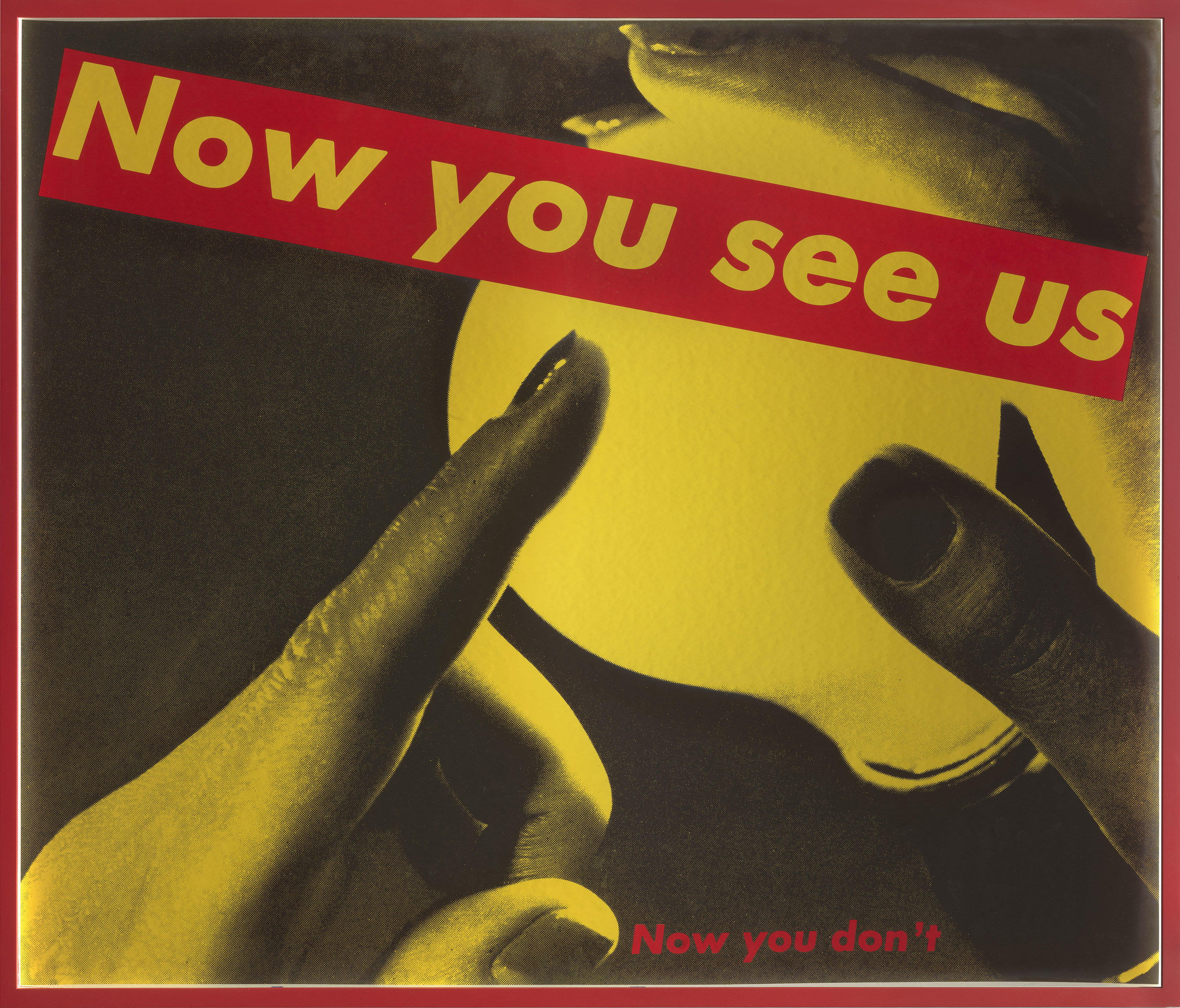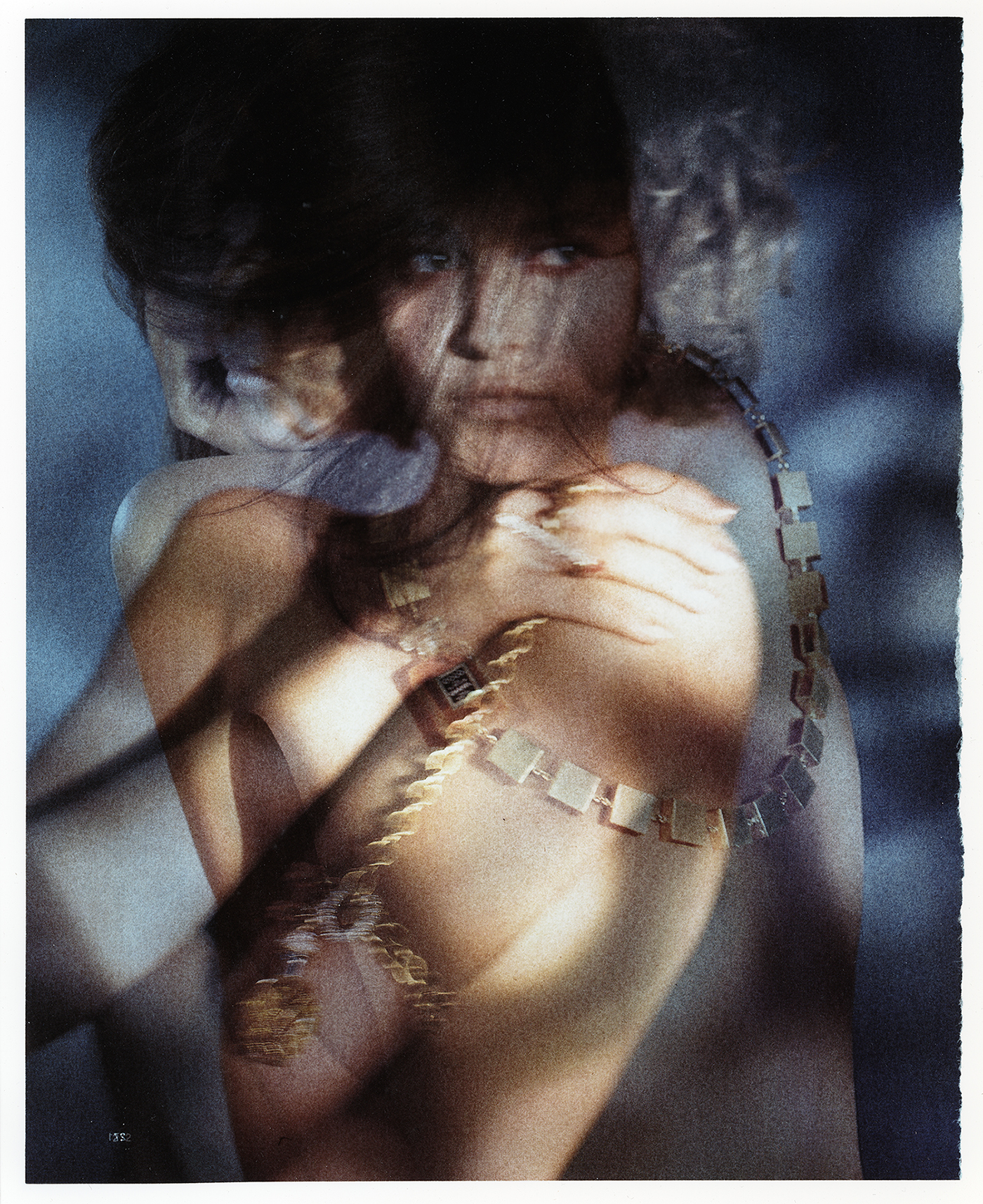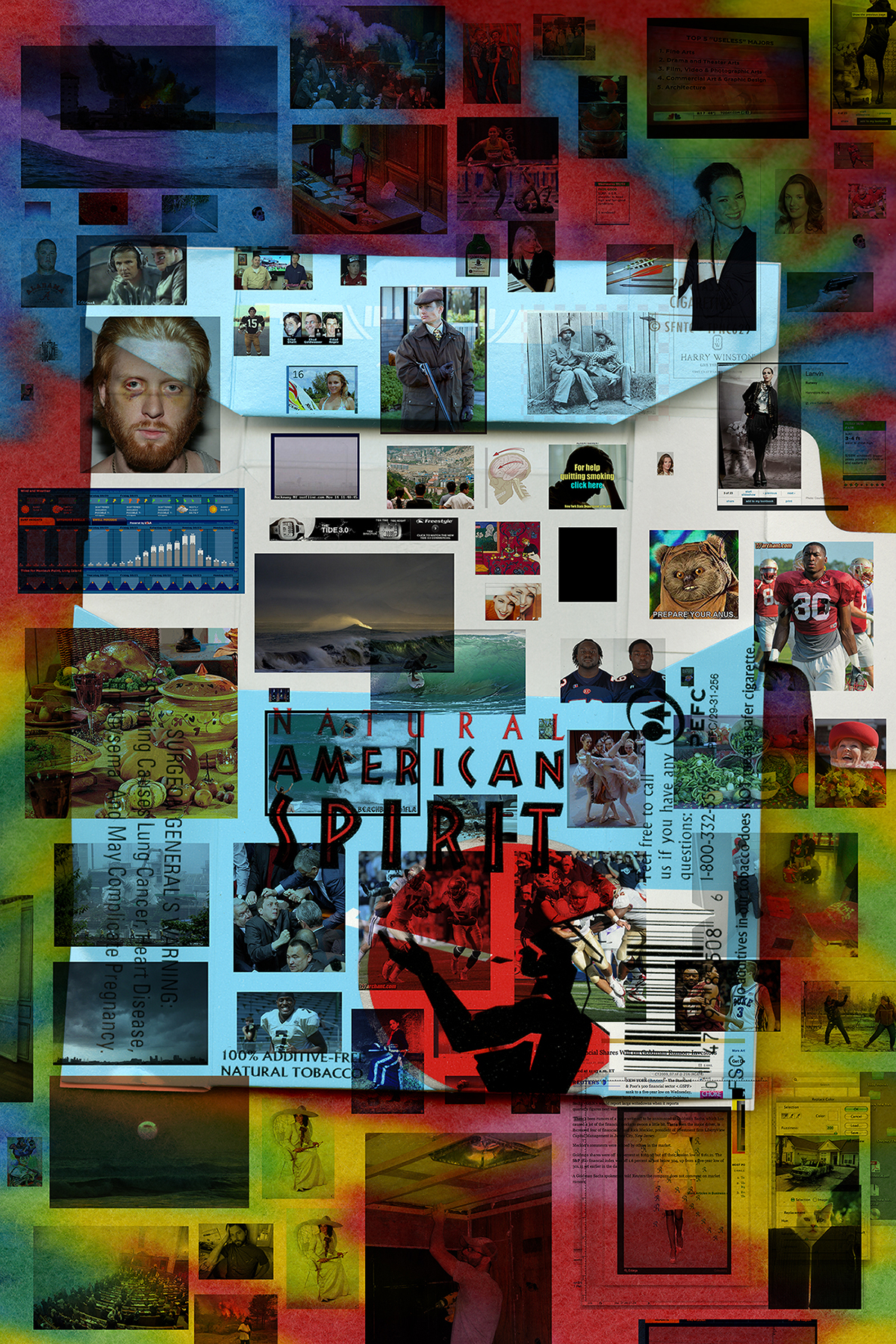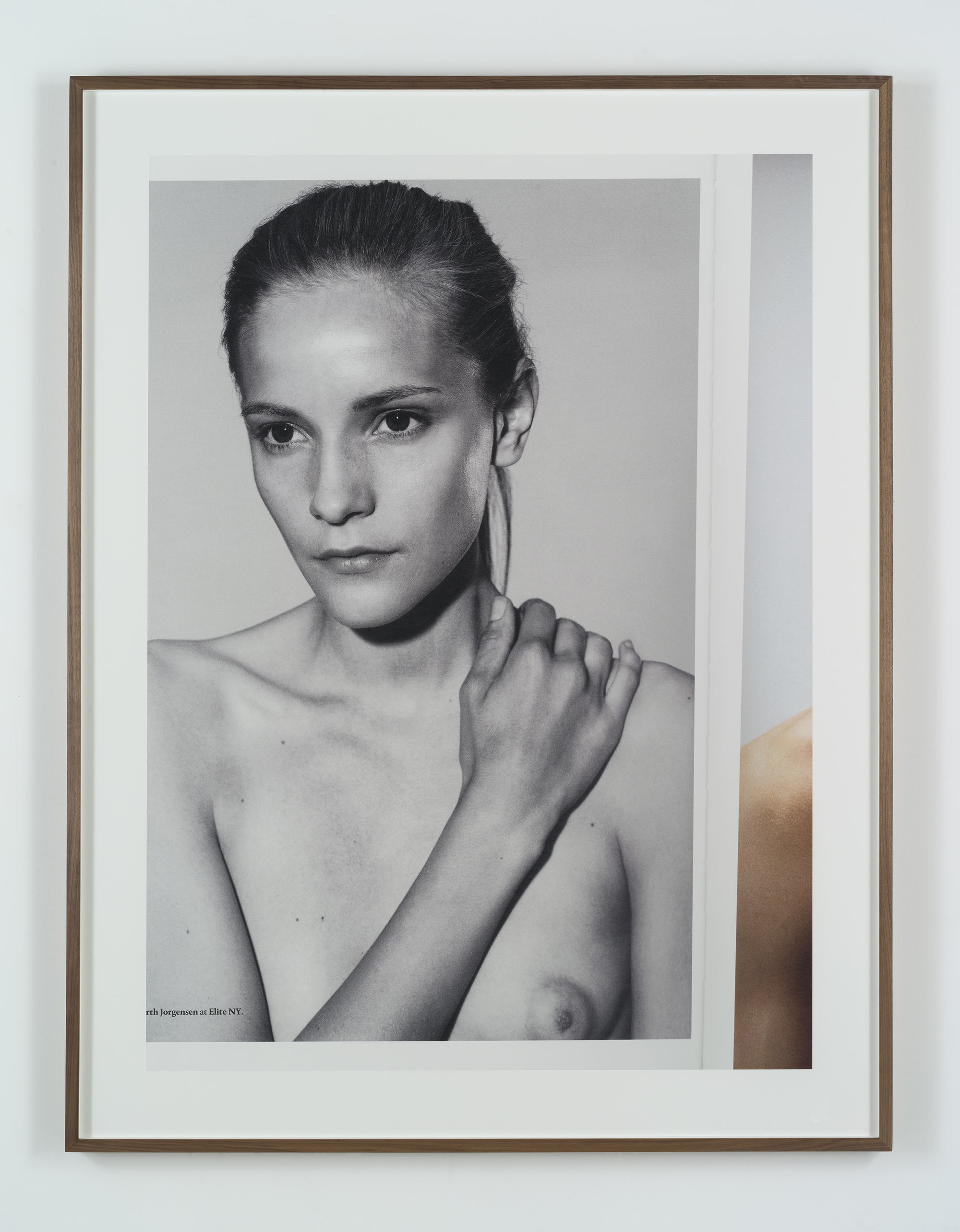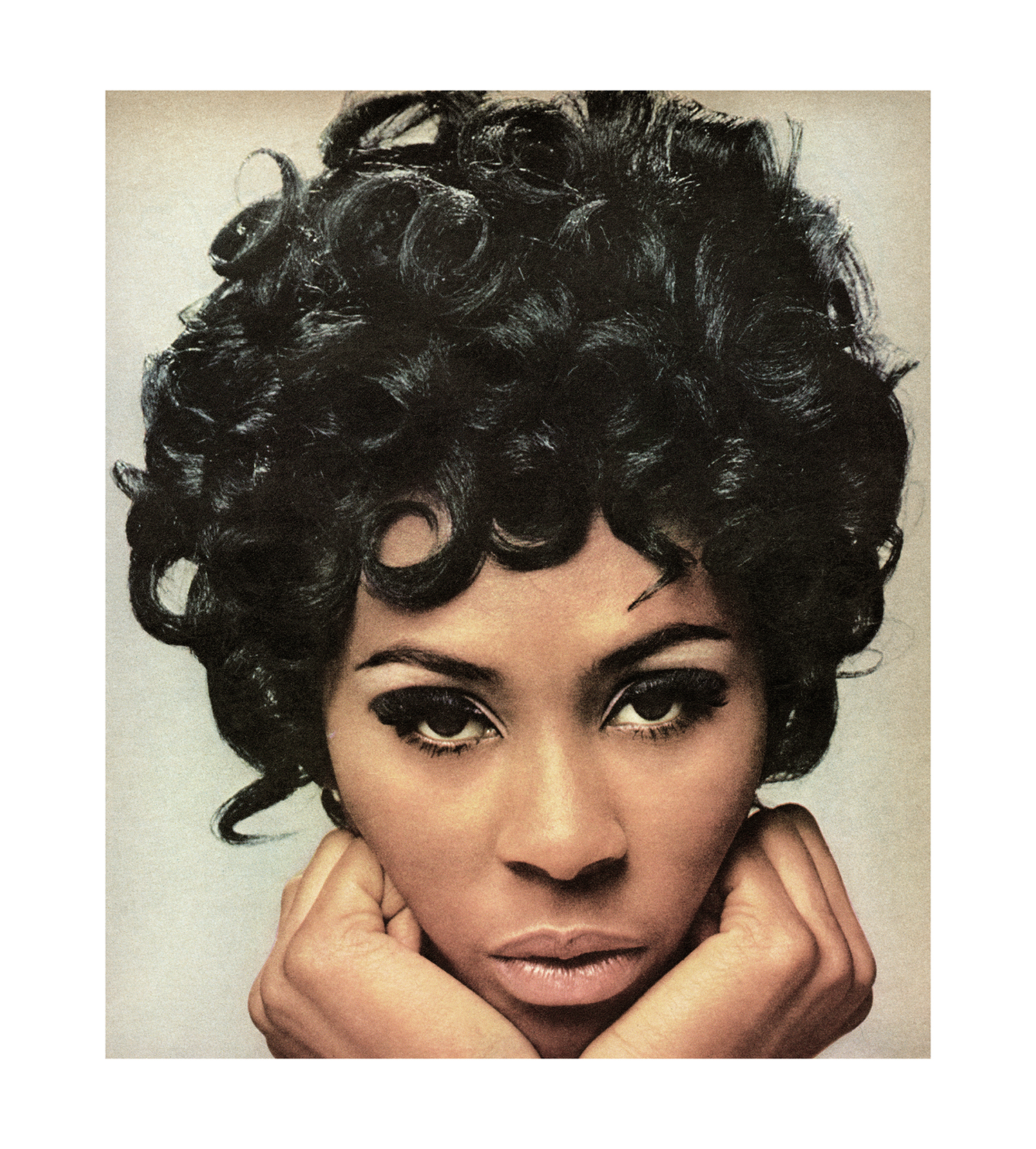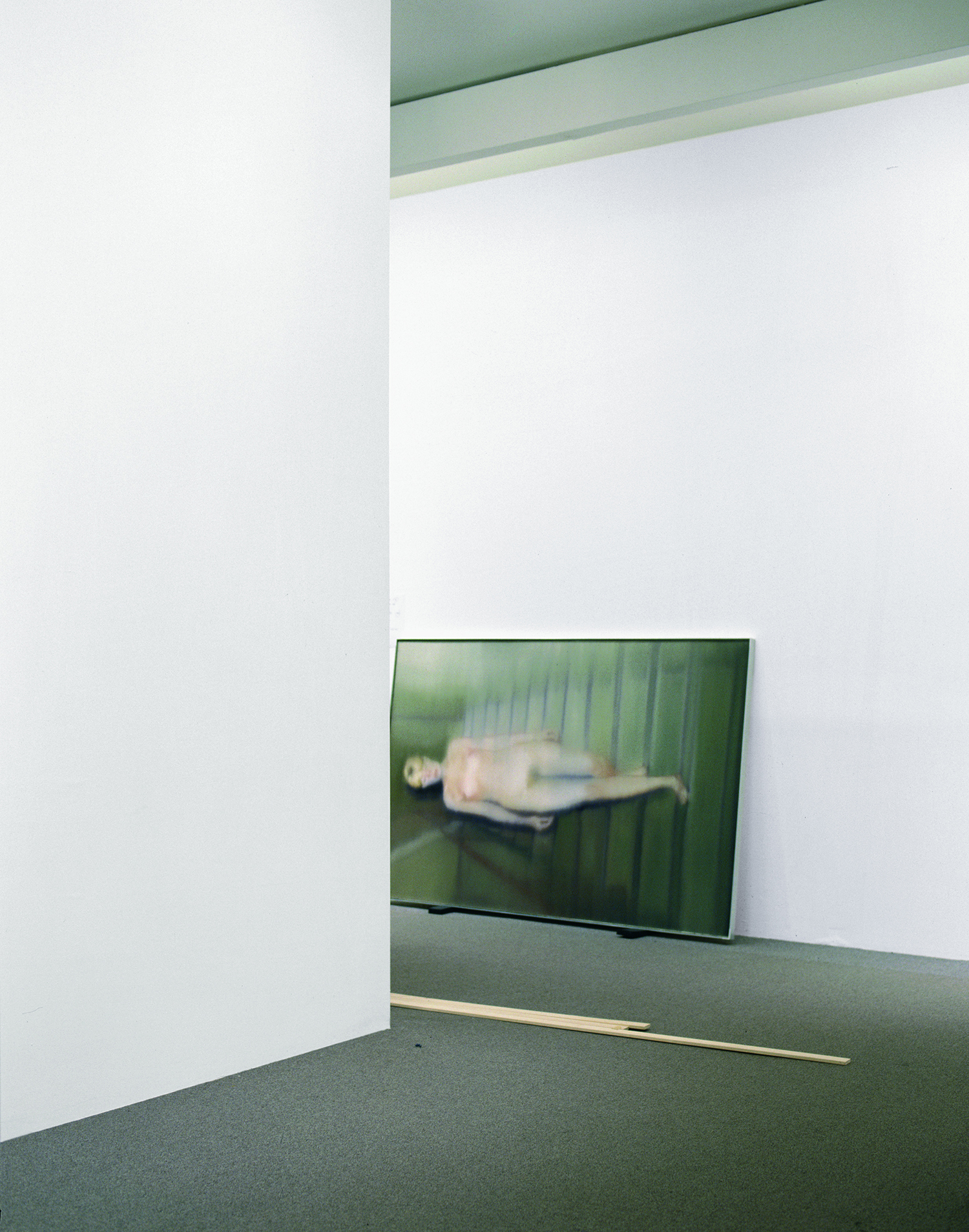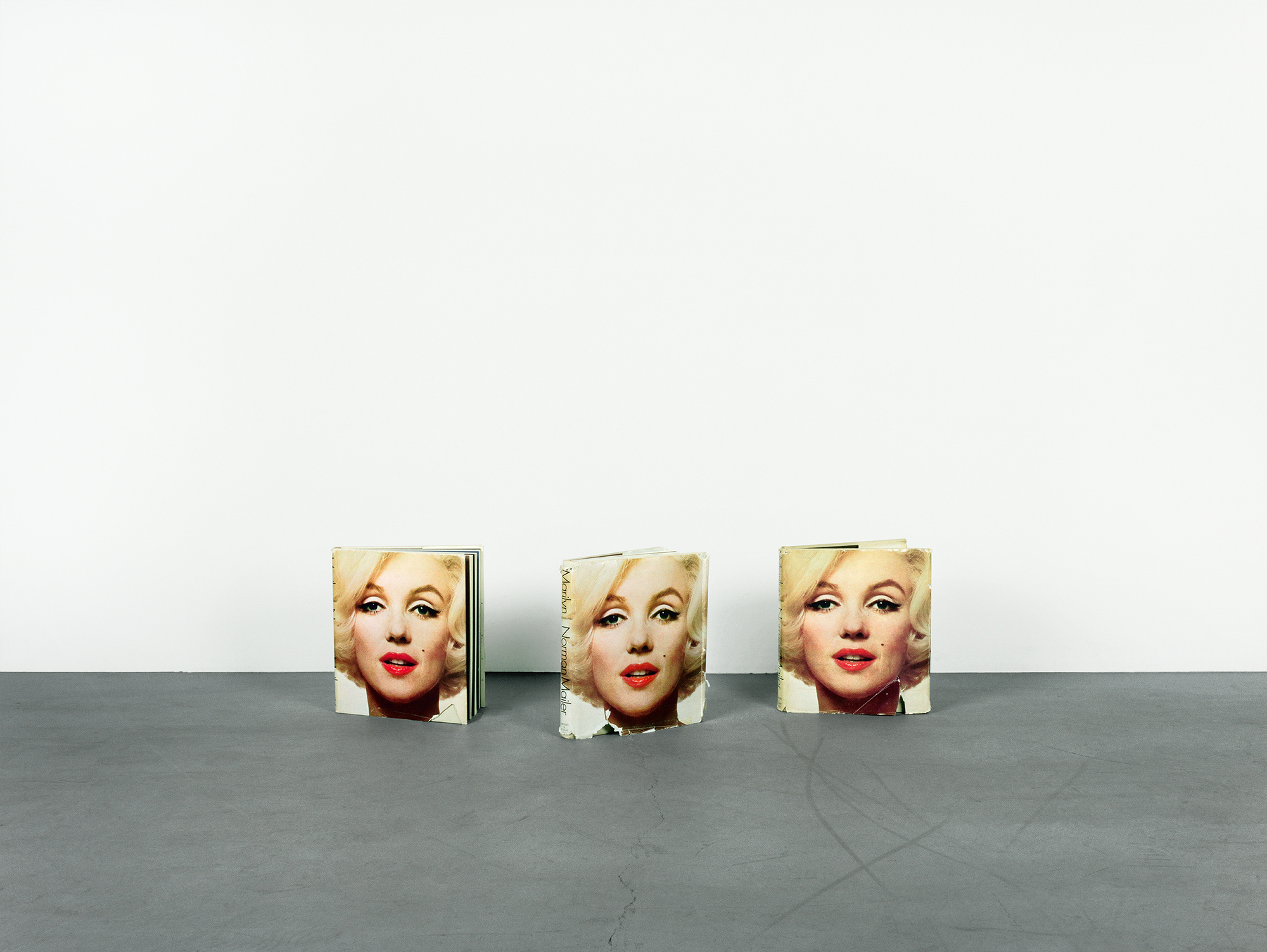
Why Wait Another Day to be Adorable, Tell Your Beautician “Relax Me” is part of a long series of appropriation works which use images of Black women in beauty ads, from the years between Martin Luther King’s assassination in 1968 and President Obama’s election in 2008. This particular image comes from a hair relaxer ad from 68, intended to straighten curly hair more easily. Another series of the artist’s work, represented here with I depend on me, comes from a Dior ad, showing a woman’s hand suggestively placed between her legs. It’s also the title of a Beyonce song.
The wider show, which includes work from Richard Prince, Barbara Kruger and Anne Collier, amongst others, is summed up well by Thomas’s discussion of these two pieces—while “stealing” might be the loudest part of many appropriation works, their implications stretch far further. In a majority of the images on show, the human is a central figure, warped, buffed and packaged to fit whatever most suits the agenda—lipstick, cigarettes, race, gender.
Thomas mentions both practical and political reasons for ads, in particular, being such rich ground for appropriation artists. Practically, he says, photographers of commercial images find the whole issue of appropriation to be less problematic than creative projects. Many will have photographed the image for the paycheck involved, and elements of ownership lie also with the brand. Although he mentions that his view of appropriation has changed since studying photography, when it felt like theft to him, it seems as though there is a level of consideration of the original photographer (although, he does also mention a conversation with a photographer who suggested he would sue him for using his image. “Maybe you should,” said Thomas, out of interest in where the case might go, and what else the work might be able to say within that narrative.)
Politically, the world of advertising offers rich material for these artists. Thomas says how “politicised” femininity and race has become over the years. “People learned whiteness through ads also,” he mentions and notes the assumptions of taste and style that are placed on entire groups through advertising.
Elsewhere in the exhibition are numerous artists who Thomas states as influences; Barbara Kruger was his first point of contact with this way of making work. Kruger’s Untitled (Your Gaze Hits the Side of My Face) from 1981 creates a strange tension between advertising and art, reality and fantasy, intimacy and coldness. The figure, a sculpture, is perhaps as real and tangible as any version of the female form shown through advertising, cold and chiselled, gazing away from the viewer with a tagline which contrarily appears to invite closeness.
Kruger’s Untitled (Your Fact is Stronger than Fiction) is one of the most blatant examples of the questioning of truth and the limits of the image that is included in the show. It works well with the nearby Are You Rea from Robert Heinecken, which combines twenty-five magazine contact prints from over two-thousand collected by the artist. One slices the all important last letter from its tagline: “Are you real?”.
There are elements of borrowing within the exhibition from artist to artist also. Two versions of American masculinity are placed nearby one another—Richard Prince’s Cowboys (1982 and 2000) and Steven Shearer’s Guys (2005). These visions of manliness play with props–women and horses, and guitars respectively–although Shearer’s take their cue not from advertising, but, as one of the only works in the show to do so, from the mass of non-commercial images that now exist online.
Props play an important role in Anne Collier’s work also. Studio Floor #3 (Marilyn, Norman Mailer) depicts one of most—if not the most—recognisable female faces from modern American culture, Marilyn Monroe. Here, however, her treatment is subtly vulnerable. Her face, appearing three times, adorns the cover of tattered books, propped up and photographed against a broad studio floor and white wall. The idealized image of this all-American icon is exposed, beyond the image itself. Woman With A Camera (Profile) also functions to avert the gaze away from a central icon or prop, as we see the side-view of a female photographer, her subject entirely out of frame.
Thomas describes himself as a “visual culture archaeologist” or “DJ”, referencing the sampling of pre-existing musical forms that has also become so central to modern culture. It’s the “same mentality” he says, and a natural offshoot, especially in very recent years, to digital photography and manipulation. Double Take doesn’t play hugely to the court cases and controversy that surround some of these artists, but instead to their modes of communication, and their way of exposing a world that has huge implications on those it attempts to influence and shape with its own bewitching language.
‘Double Take’ is showing at Skarstedt, London until 22 April. skarstedt.com
